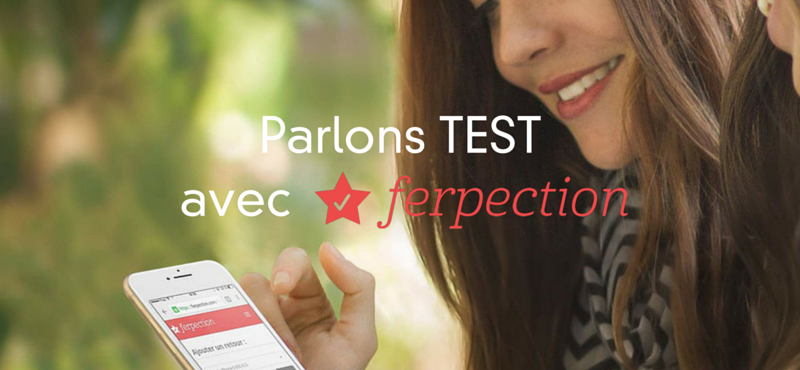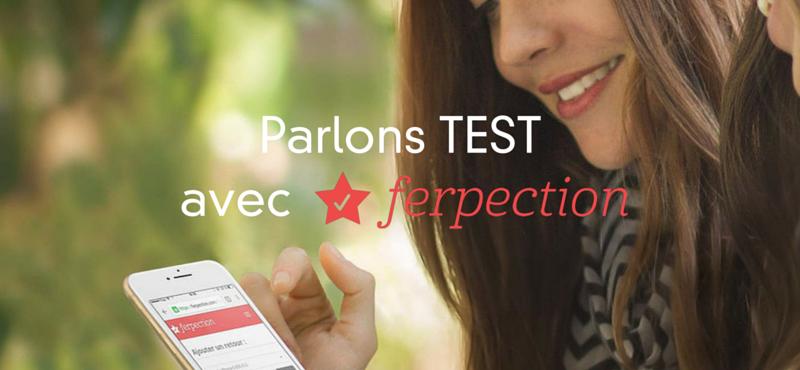 "When I was Digital Manager for Coca-Cola", Thibault Geenen (Ferpection CEO) confides, "I could not find a solution that would enable me to check that our websites and mobile applications would be used with ease and pleasure by our customers." When he meets Arnaud Limbourg (Ferpection CTO), they decide to solve the problem together by creating a community that would be all about user testing: Ferpection. That was back in November 2014. Here at StarDust, we are attentive to all the actions that improve digital quality and wanted to find out more about Ferpection's complementary approach to testing.
"When I was Digital Manager for Coca-Cola", Thibault Geenen (Ferpection CEO) confides, "I could not find a solution that would enable me to check that our websites and mobile applications would be used with ease and pleasure by our customers." When he meets Arnaud Limbourg (Ferpection CTO), they decide to solve the problem together by creating a community that would be all about user testing: Ferpection. That was back in November 2014. Here at StarDust, we are attentive to all the actions that improve digital quality and wanted to find out more about Ferpection's complementary approach to testing.
Testing for Start-Ups and Majors
In a little over a year, Ferpection completed over 150 test missions for start-ups and large corporations wishing to have their websites and mobile apps meet users' expectations in the best possible manner: thus, Meetic, Samsung, BNP Paribas, Leroy Merlin, and even L’Oréal (see example below) take advantage of Ferpection's community of over 10,000 qualified users.
An Original Approach to Quality: a Community of Users Testers
Ferpection has built a community of qualified users -paid per test project- that explores websites and applications on their own smartphones and tablets. Therefore, the test experience is done under real conditions. In actuality, when a company wishes to optimize its product before or after release or make sure it's a success with the targeted users, Ferpection meets the need within 7 days:
- = The Ferpection team puts together an exploratory brief covering the website/app to be tested.
- = Ferpection invites a group of user testers that are part of its community to step into the shoes of the end-users by using the persona technique.
- = Then, these user testers navigate the site/app: they go through checkpoints listed in the brief and provide feedback on any negative or positive experiences on ferpection.com and illustrate such feedback with commented out screenshots.
- = Ferpection collects and validates the feedback.
- = The results are analyzed, considered, and classified. This way, recurrent high-priority problems are identified. An action plan containing 10 priority optimization measures is forwarded to the client.
Example: "Style My Hair" App, by L’Oréal
GOAL: assess whether the application meets users' expectations and find a way to improve the current version of the mobile app.
USER TESTS: 40 selected users explored the application and made over 500 feedback entries: unsettling home page design, problems with image creation, etc.
REPORT: a priority action plan implemented by the L'Oréal team providing specifically for:
- modifying the home page's ergonomic design to make access to the various sections more intuitive;
- giving more information for frist-time users;
- improving ASO (Application Store Optimization) to make the application easier to find.
RESULTS: the user score as represented by the Ferpection Predictive Score rose from 2.8 to 4.0 out of 5 after the recommended optimizations were implemented.
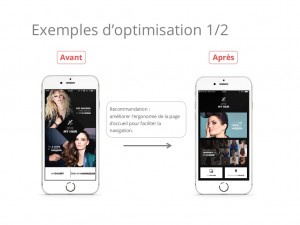
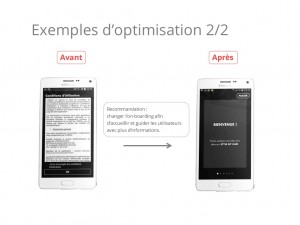
More information on the optimizations suggested by Ferpection is available on SlideShare
User Expectations at Heart of Everything
The technical and functional tests provided by StarDust identify bugs in order to help develop a digital product of a quality that is as impeccable as it is achievable. Ferpection fits in ideally with StarDust's quality approaches by focusing on user expectations:
- Does the developed product answer the user needs?
- Does the user want to use the product?
- Does he or she take pleasure in using it?
- How does one make his or her experience as agreeable as possible?
In short, Ferpection brings companies feedback from the "grass roots", a consumer study reinvented for sites and mobile applications.
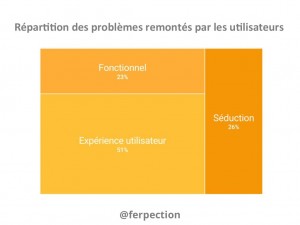
Learn more about Ferpection, follow their blog
